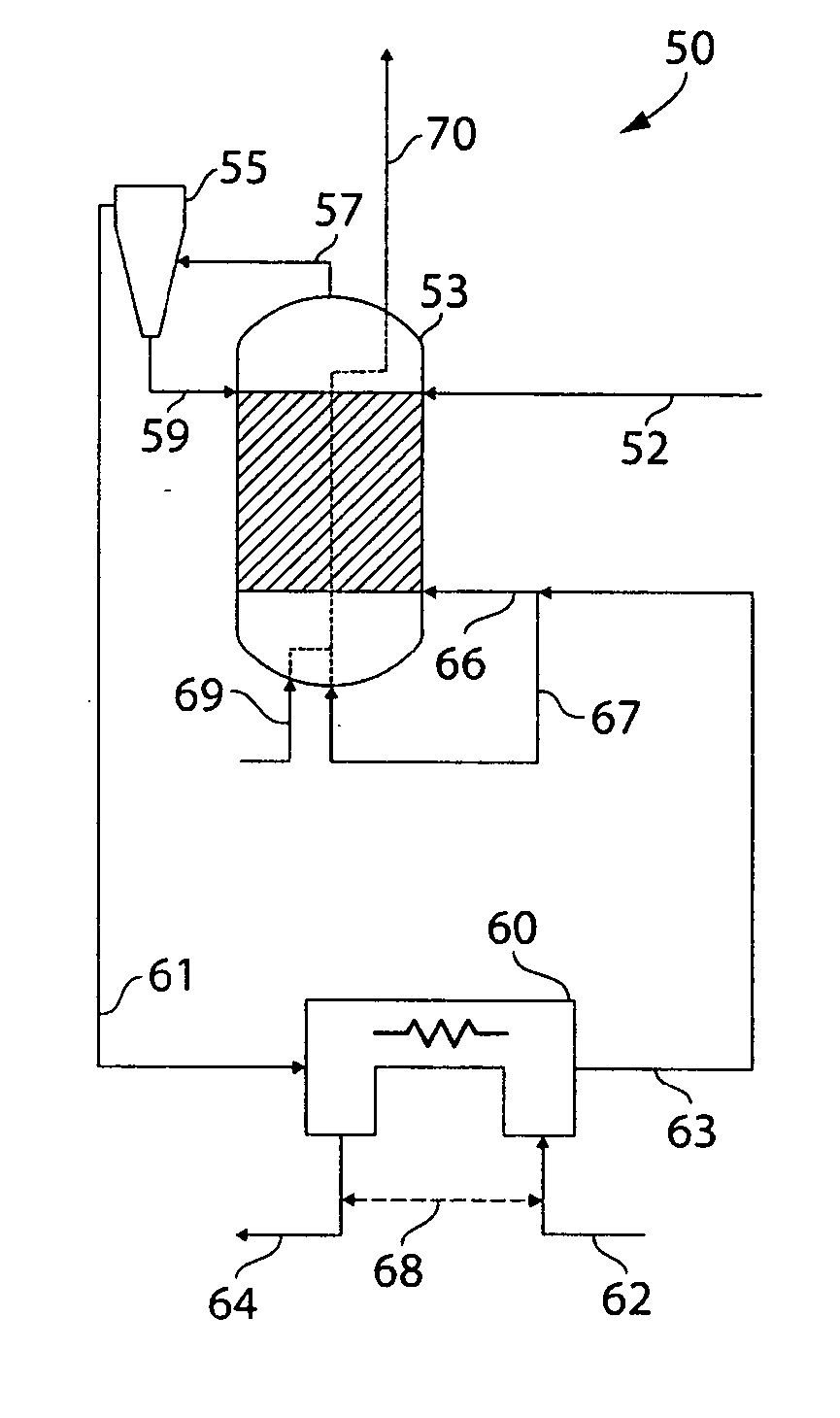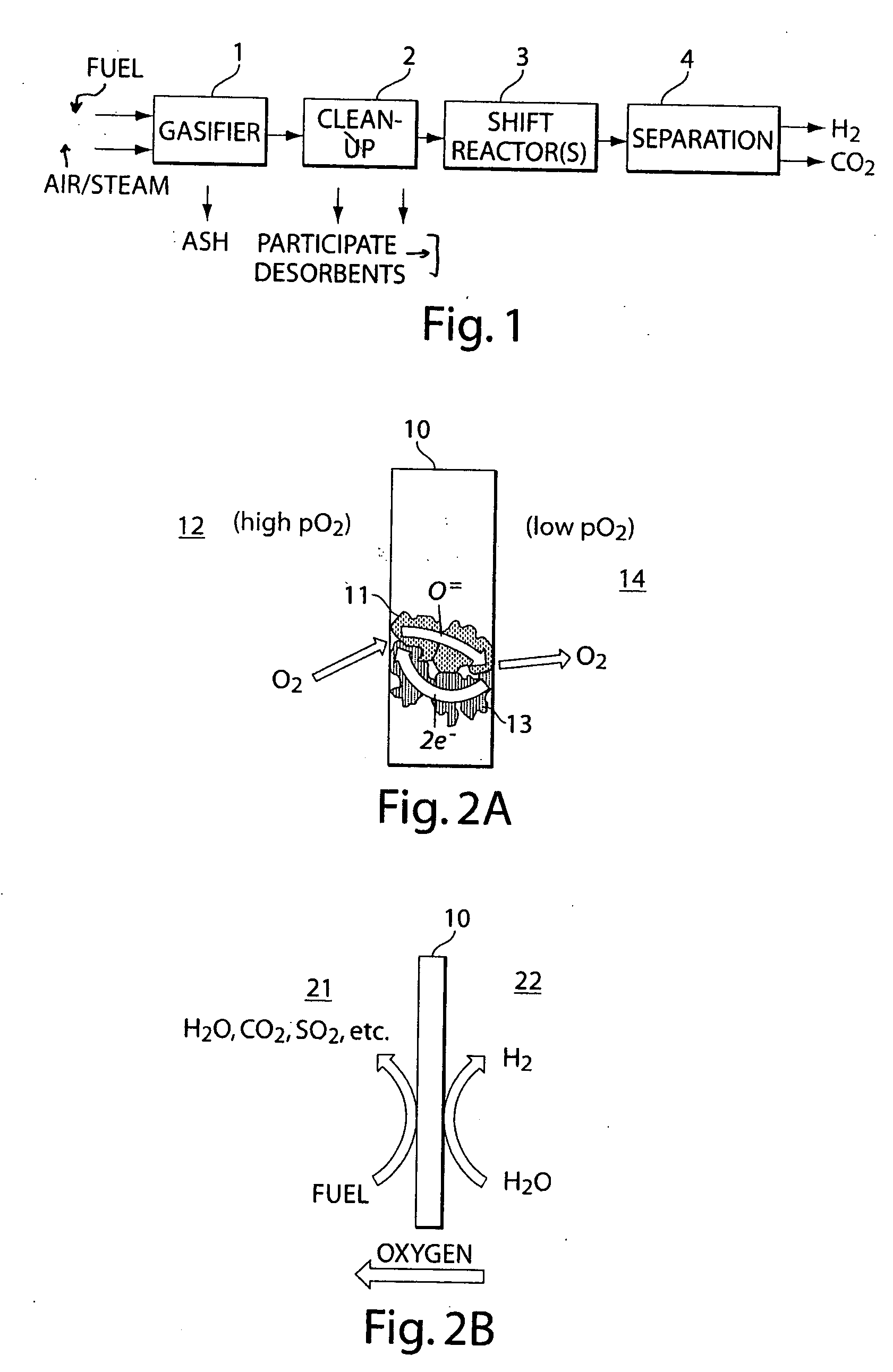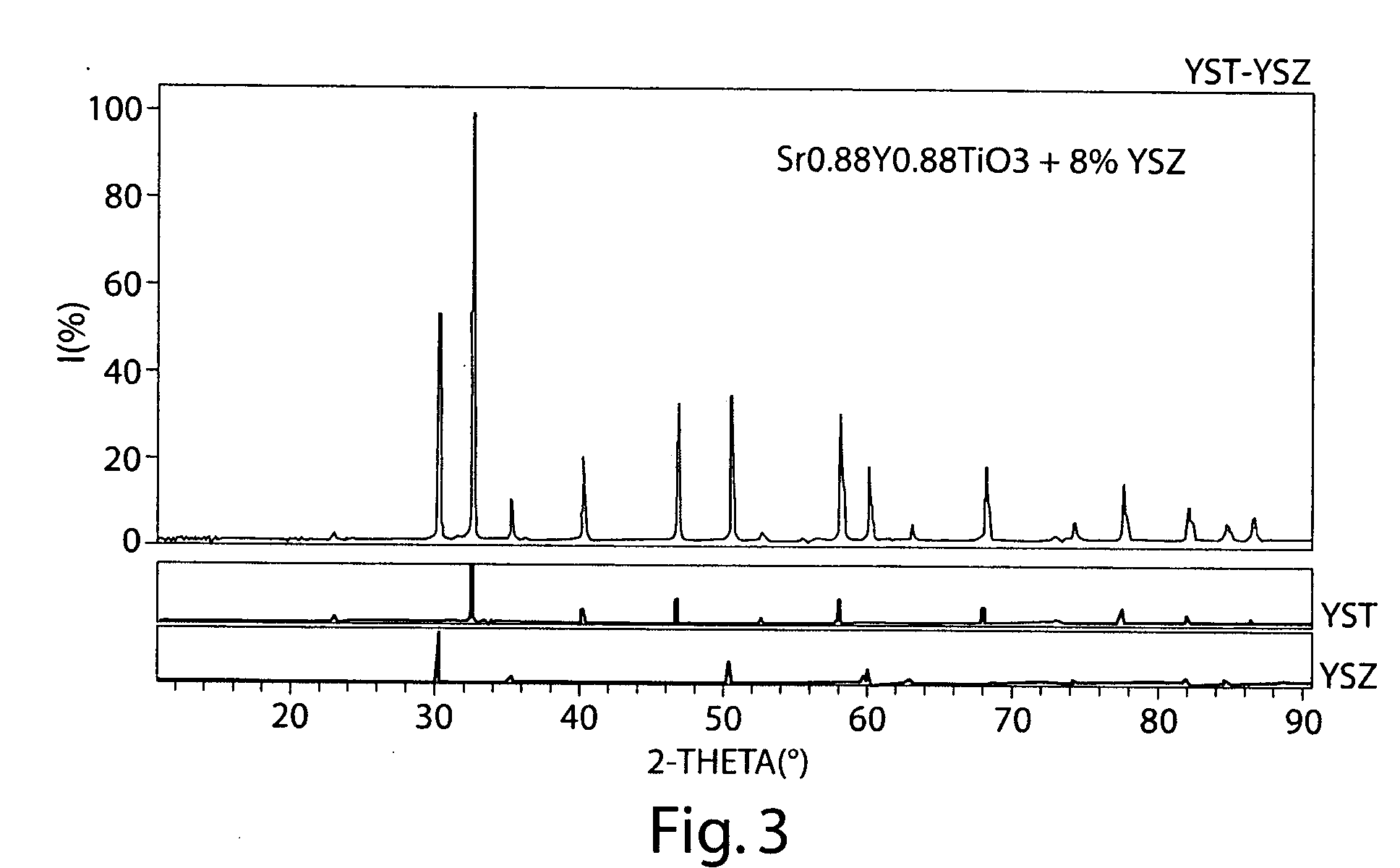Conducting ceramics for electrochemical systems
a technology of electrochemical systems and conductors, applied in the direction of electrode manufacturing processes, liquid-gas reaction processes, combustible gas production, etc., can solve the problems of advanced hydrogen gas separation methods, energy-intensive pressure swing adsorption techniques,
- Summary
- Abstract
- Description
- Claims
- Application Information
AI Technical Summary
Benefits of technology
Problems solved by technology
Method used
Image
Examples
example 1
[0083] In this example, the hydrogen yield from a ceramic that is used to separate an oxidizable species on one side and a reducible species on the other side (see FIG. 2), is calculated. The ceramic is short circuited by the electron flow.
[0084] In such cases, an electrical current, I, according to Ohm's law, may be expected: I=VR.
[0085] The voltage V can be calculated from the ratio of partial oxygen pressures on either side of the membrane using the Nernst equation. The resistance, R, can be divided into at least the following components: (1) a polarization resistance on the cathode due to the charge transfer, Rc; (2) an ohmic resistance resulting from the ionic transport through the membrane, Ri; (3) a polarization resistance on the anode due to the charge transfer, Ra; and (4) an electronic resistance that short circuits the cell, Re:
R=Rc+Ri+Ra+Re
The electronic resistance, Re, can be made negligible relative to R, in some embodiments, by an appropriate choice of ionic and / ...
example 2
[0088] This example illustrates a reactor according to one embodiment of the invention. The reactor used in this example is schematically shown in FIG. 4. Table 2 shows the mass and energy balances for a 1 MW hydrogen production system. The difference in enthalpy flows between the H2 line 64 and the steam line 62 in Table 3 is the latent heat value (1 MW) of the produced hydrogen. It has been assumed in this example that in steam line 62 in the table a fraction of hydrogen is present. In a complete system this may be derived from the product stream. In stream a the ratio of CO to CO2 is set equal to 8. This is the equilibrium value that would be obtained in a gasifier operating at 800° C. in the presence of C, CO, and CO2.
[0089] Going from stream 57 to stream 63, the gas passes through the separator and the magnitude of the CO flow reduces as much as the CO2 flow increases. The formation of CO2 might seem rather low in relation to the total flow that enters the separator. This, how...
example 3
[0094] The following example illustrates the production of a mixed ionically and electrically conducting ceramic for use in a reactor, according to one embodiment of the invention.
[0095] Initially, a support tube was extruded and dried. The support tube is formed from Ni-YSZ, although the extrusion dough may contain, besides the Ni-YSZ precursors, binders, pore-formers etc. The Ni-YSZ tube was extruded using standard extrusion techniques known to those of ordinary skill in the art. The tube had a wall thickness of 1 mm and a diameter (green) of 9 mm. The tube was allowed to dry and harden before next step.
[0096] Next, a caps were added to the tube. The caps were circles cut from a green Ni-YZY sheet, and glued onto ends of tubes to form caps using Ni-YSZ slurry in a solvent. The cap was then bisque fired in air for 2 hours at 1100° C. An inner functional layer was then applied, after the tube had cooled. The functional layer was prepared by dip-coating the ceramic in a solution co...
PUM
| Property | Measurement | Unit |
|---|---|---|
| thickness | aaaaa | aaaaa |
| resistivity | aaaaa | aaaaa |
| pressure | aaaaa | aaaaa |
Abstract
Description
Claims
Application Information
 Login to View More
Login to View More - R&D
- Intellectual Property
- Life Sciences
- Materials
- Tech Scout
- Unparalleled Data Quality
- Higher Quality Content
- 60% Fewer Hallucinations
Browse by: Latest US Patents, China's latest patents, Technical Efficacy Thesaurus, Application Domain, Technology Topic, Popular Technical Reports.
© 2025 PatSnap. All rights reserved.Legal|Privacy policy|Modern Slavery Act Transparency Statement|Sitemap|About US| Contact US: help@patsnap.com



